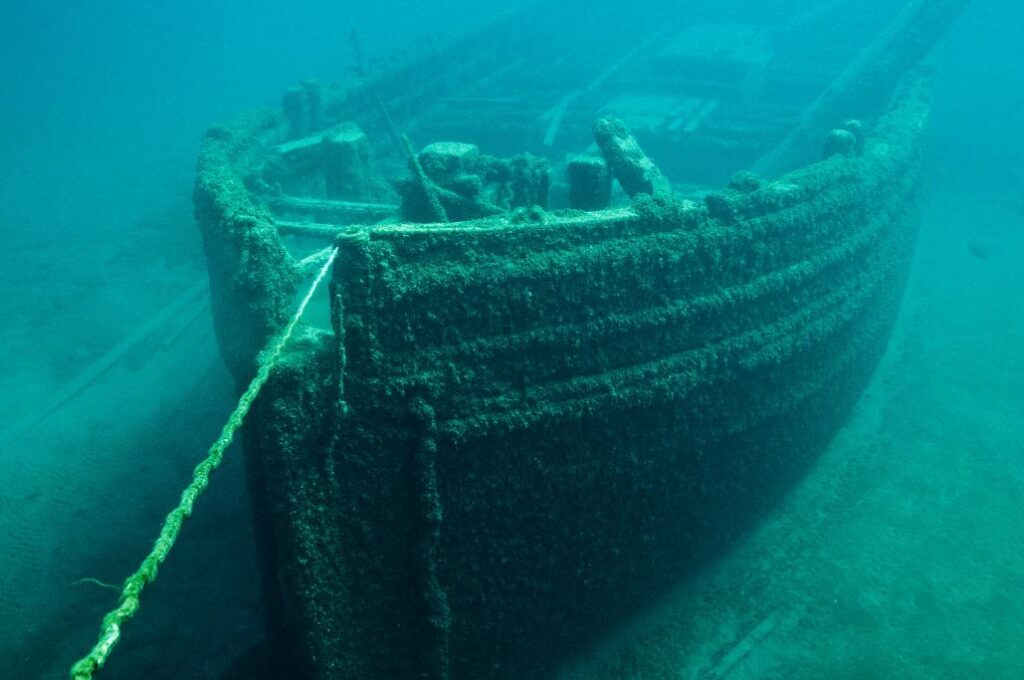Envision an event of cataclysmic proportions, as surreal as a horror film plot – a submersible, home to five souls, experiencing a fatal implosion deep under the ocean, in proximity to the Titanic’s wreckage.

The question swirling around in media circles: will there be efforts to recover the bodies? However, what’s even more compelling is understanding the actual impact such unfathomable depths have on the human body. The answer weaves through the intricate world of deep-sea physics, marked by high temperatures and pressures. Let’s embark on a temporal journey – a microscopic snapshot of each millisecond – as we dive into this dark, alien landscape.
The Power of Pressure
Before we dive into the details, a fundamental understanding of pressure is essential. Simplistically, pressure is the force applied per unit area. In our regular environment, we experience it as air pressure. However, as you delve underwater, this pressure escalates due to the water weight overhead. Every descent of 10 meters (around 33 feet) raises the pressure by 1 atmosphere (atm), or approximately 14.7 pounds per square inch (psi).
The Titanic wreckage resides at an extraordinary depth of about 3,800 meters (around 12,500 feet). At this point, the pressure skyrockets to an astounding 380 atmospheres, or nearly 5,600 psi. To visualize this pressure, imagine an enormous elephant standing on every square inch of your body.
Tracing Terror Through Time
In our grim scenario, we postulate a sudden, catastrophic failure of the submersible wall. What would this mean for the individuals inside? Let’s investigate the stages.
The First 10 Milliseconds
The instant the hull is compromised, the pressure inside and outside the submersible equalizes abruptly. The air inside, initially at a comfortable 1 atmosphere, must instantly grapple with the external pressure of 380 atmospheres.
This scenario would lead to an explosive outcome. At this depth, the surrounding pressure exerted on the entrapped air bubble containing the five individuals is a colossal 38,503,500 pascals. For context, this is akin to the pressure unleashed by 292 kilograms of C4 explosive.
However, this is just the initial plunge into the abyss of trauma. The imploding submersible would generate intense heat due to a phenomenon known as adiabatic compression.
11–50 Milliseconds: A Transient, Underwater Inferno
Adiabatic compression is a quick, heat-generating process that occurs when gases are under extreme pressure.
As the submersible collapses, rapidly compressing gas pockets within heat up dramatically, potentially reaching temperatures exceeding several thousand degrees Celsius momentarily.
This intense heat would instantly vaporize human tissues, including bones. However, the rapid pressure alterations have already caused significant damage to the body. The passengers would be deceased due to massive physical trauma before the heat wave arrives.
50 Ms to 1 Second: The Speed of Sensation
The human response to pain depends on the transmission of signals from our peripheral nervous system to the brain. Once these signals reach the brain, we experience pain. This process is not instantaneous; it requires time.
In normal conditions, pain sensations, like a stubbed toe or a pinch, reach our brains about 0.1 seconds post-event. This delay is because the signals travel at about 2 meters per second along our nerves.
However, sudden, acute pain can be perceived faster, at approximately 0.01 seconds, thanks to quicker-conducting nerves known as A-delta fibers.
Drawing a comparison with our disastrous implosion scenario, the total collapse of the submersible occurs in around 50 milliseconds (0.05 seconds). This means the implosion happens 2 to 10 times faster than the human body’s ability to register pain.
Thus, it’s likely that the submersible’s occupants would not have had the time to comprehend what happened, let alone experience pain from the event.
The sequence of horrific events – the crushing pressure, the scorching heat from air compression, and the brutal water intrusion – probably occurred faster than the brain’s ability to process any thoughts.
While it’s cold comfort, this detail may help us understand the form of death these individuals experienced. Our brains, adapted to surface world conditions, simply can’t keep pace with the immediate, extreme changes happening in those fateful 50 milliseconds beneath the waves.
Learning from Tragedy
A submersible’s sudden implosion, while horrifying, offers a window into the stern realities of deep-sea exploration and the extreme physics involved.
The insights gleaned from these tragic events inform regulations for manned submersibles and influence future submersible designs, making each successive deep-sea expedition a tad safer.
Through tragedy, we acquire knowledge, helping us comprehend our world and navigate its perils better.
This brutal lesson is a testament to human endurance limits and the raw power of nature. It also reminds us of life’s fragility and the bravery of those pushing human exploration boundaries.
With each deep-sea expedition, we realize how much we still have to discover.
Ultimately, our quest to comprehend our world – from the deepest oceans to the farthest galaxies – reflects human curiosity and tenacity. This journey, fraught with risks, hurdles, and at times, profound loss, is our pathway to learning, evolving, and pushing the boundaries of the possible.






